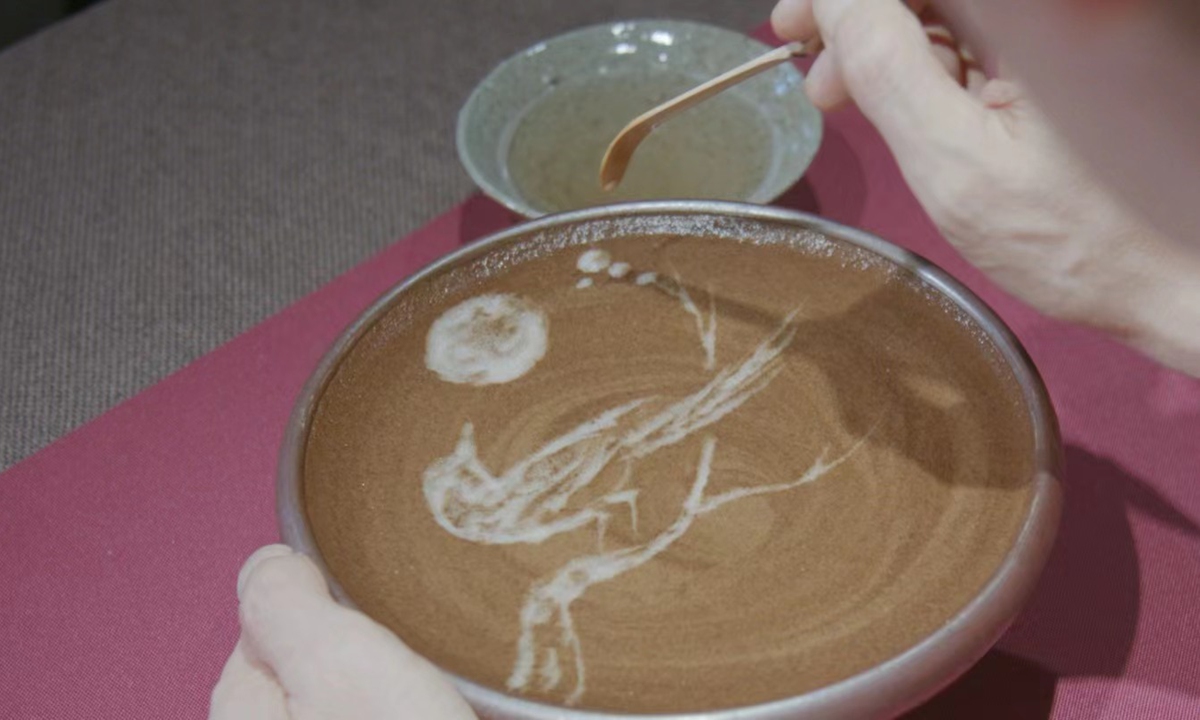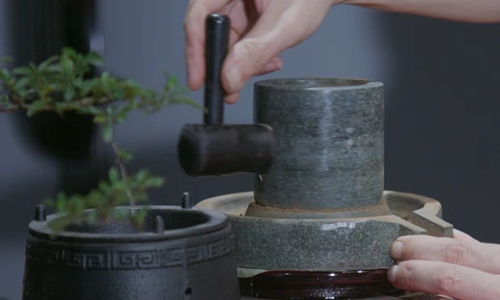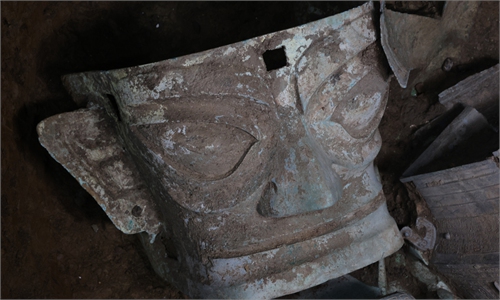ARTS / ART
Ancient tea technique finds new popular recognition

The process of making chabaixi, a unique technique that creates a pattern on the surface of tea soup via water injection and agitation in Song Dynasty (960-1279), later becaming a cultural favor of Chinese literati. Photo: Zhang Zhifeng
By drawing patterns on the surface of a cup of tea, chabaixi, an ancient Chinese tea trick displayed in a recent TV drama, has gone viral for its apparent similarity with modern latte art. However, 10 years ago, this distinctive technique was close to disappearing completely.
"The process is very complicated. From withering and oxidizing, to crushing tea leaves, and drawing patterns, it in fact requires dozens of processes to complete," Zhang Zhifeng, a practitioner of chabaixi, told the Global Times.
Made in ancient China
Zhang spent nearly 30 years studying and researching the origins and making of tea, but for him it was all worthwhile.
As an exclusive art form in China, which had once been as normal as drawing and playing of instruments, chabaixi can create endless patterns such as bamboos and mountains or even calligraphy such as autographs and short proverbs.
"It is completely different from making latte because we use clear water as the object to inject into the cup instead of milk. But when the water touches the surface of whipped tea, it turns into a white color and disappears in 20 minutes," Zhang explained.
"Whipping the tea powder and adding hot water until foam shows is the key to drawing patterns in the surface, which is the main test of skill. Song Dynasty literati would compete with each other in making fine patterns or calligraphy," he said.
Chabaixi is one of countless forms of tea making techniques in China. The earliest tea remains in the world were found in China and were dated back about 2,400 years. They are believed to have been used initially for medical purposes.
China grew tea in plantations from the 4th century, and it came to symbolize wealth and status. In the Tang Dynasty (618-907), nobles and royals would use fine tea bricks with a handful of orange peel or mint, along with exquisite and luxurious teapots and tea sets, based on relics unearthed.
However, the high point for tea culture was the Song Dynasty, when much cheaper loose-leaf tea replaced the tea bricks and public teahouses appeared in cities such as Luoyang and Hangzhou.
"The significance of chabaixi is not only that this technique is unique in the world, but more importantly it gives us a window into people's lifestyle in the Song Dynasty [960-1279AD], a period of time when leisure activities in some ways resemble what we have now," he added.
Unlike the prosperous Tang Dynasty with its strict management, curfews were lifted in the Song and the grassroots economy developed, boosting art and culture. That is why Chen Yinke, the famous modern Chinese historian, gave such high praise for the period. China's culture has evolved over thousands of years, but it arguably reached its heyday in the Song era.
"The shining grassroots economy and humane culture brought many activities to the street for the public to enjoy," said Deng Xiaonan, professor at the Institute of Humanities and Social Science of Peking University. During the Song Dynasty, "public venues for storytellers, tea appreciators, juggling and many other activities could be seen in the streets where people gathered for leisure and entertainment," Deng said.

The process of making chabaixi, a unique technique that creates a pattern on the surface of tea soup via water injection and agitation in Song Dynasty (960-1279), later becaming a cultural favor of Chinese literati. Photo: Zhang Zhifeng
Inheritance
Before chabaixi was discovered by TV audiences, the technique was listed as part of China's Intangible Cultural Heritage in 2017, after it was recovered by Zhang Zhifeng. "This technique is key to tea culture from the Song Dynasty, and it would be such a shame to let it wither."
Zhang added that he was glad to see that the TV show, A Dream of Splendor, brought the technique to people's attention.
Now with the maturity of Zhang's skill in tea making, he is also demonstrating chabaixi in vocational schools across China.
"But it is also necessary that this technique is passed on to the next generations so they can understand the history behind it," Zhang added.


